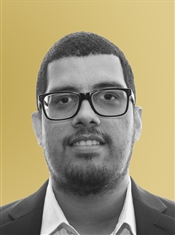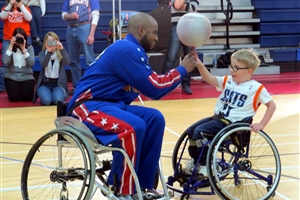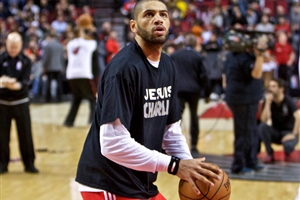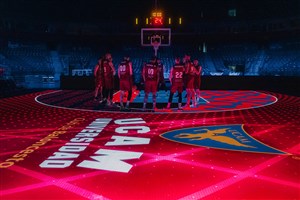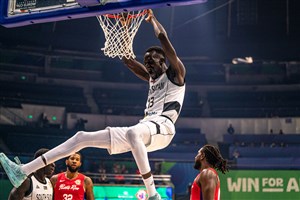
LDA2015 and TV deal: What it takes to grow a continental league into a product
SAN JUAN (William Rosario's Somewhere in the Americas) - The 2015 DIRECTV Liga de las Americas is back in what promises to be the best season yet. Granted, this is a young competition with only eight editions under its belt, but one has to give it credit for steadily growing every year.
I don’t know if you noticed, but there’s been a change in the name of the competition and it is significant. After eight years of making all kinds of effort to solidify the platform in the Americas, FIBA has finally secured a presenting sponsor for the competition and it comes with an added bonus.
In 2007 the league premiered with a leg up having already signed a television contract that guaranteed its exposure through the continent. As Alberto Garcia, FIBA Americas Regional Director, put it: "It didn’t pay. It was good in the sense that every game was going to be broadcasted, but then we were left with the task of putting together a 16 team competition in seven cities all around the continent, without new money. We had to go into our pockets".
This is no easy task. On paper, it looks like it is a matter of coming up with 16 teams and then dividing them in four first round groups and announcing great organizing cities and voila!, but it can be a nightmare.
Behind the scenes it involves stopping currently active national leagues, traveling out three teams and seven referees from who knows where, testing the waters and then confirming interested cities looking to host, reserving hotels, agreeing on food schedules, training schedules, transportation schedules, promoting it, making sure the court is up to FIBA presentation standards, etc., all that goes on in every basketball tournament throughout the world…with a staff of maybe five people, oh and it has to be done seven times in a matter of two and a half months.
It’s brutal.
"As with everything, one starts out not really knowing how it is humanly possible to make it happen and we made and still make some mistakes. It is a young league.", added Garcia.
"In our first year we even did home and away semifinals only to figure out in the process that we have a unique problem in terms of travel possibilities within the Americas. If a team from Puerto Rico has to play home and away with an Argentinean team, it would take three weeks. It literally takes one full 24 hours day to make it from one country to the other. It would take less and fatigue the players (and everybody) less to do a home and away game against a European team. It’s closer!”
So the league carried on, correcting such mistakes on the way and later, with an already solid product, as Garcia told me, it ran into another problem.
"Then the TV channel that broadcasted the games started branching out, and grew into one of those successful networks that have second and third channel. So naturally, with fútbol being the giant it is in South America, we were moved to the third and sometimes the second channel. And it became hard to find our games.", said Garcia. WBut we were not discouraged and kept on growing and professionalizing every aspect of the league until we became a respectable and attractive sports item".
I’ve actually seen it happen. It has been a master class in seeing how a small detail can turn a big undertaking into a success. The league went from a lack luster Final Four in 2012 and a disastrous 2013 to suddenly having three fully sold out 8,000-seaters under the continental league’s moniker. And it was all due to two major decisions within the competition structure.
The first one was bringing back the Intercontinental Cup. Another tough task, but key in incentivizing everybody involved (players, coaches, team owners) in giving it their all to win the championship. The first one had Pinheiros/Sky playing Olympiacos Piraeus from Greece in Sao Paulo, and then last year Flamengo defeated Maccabi Tel-Aviv in Rio de Janeiro. Both events were huge successes not only in terms of attending public but also in bridging the gap between a powerful brand like the Euroleague and a growing one like the Liga de las Americas.
It was a celebration of the best both continents had to offer at the club level and it left everyone impressed. Specially last one with a final game attended by more than 13 thousand fans that rushed the court when the home team won.
The second one was an adjustment in the standards of the different club competitions in the continent. There would be no more doubt or confusion as to what league would be top dog in terms of level of competition within the continent and specifically in South America. Previous to this decision, the recently concluded Sudamericana (an older league) was an equally competitive endeavor. So you would usually see the same teams playing both tournaments with no problem at all. Until there was a problem.
In 2013, teams broke down in the Sudamericana and decided to not play in the Liga de las Americas. They even made public comments about prioritizing the older more traditional league over the actually continental one. They cited calendar and fatigue issues and the season was a disaster. The top South American teams were not there. So the directors of both competitions, that are actually organized by the same entity (FIBA) came up with a simple and common sense formula:
"The champion and the second place team of each national league plays the Liga de las Americas and the third, fourth and sometimes fifth place play the Sudamericana. The winner of the Sudamericana advances to the Liga de las Americas", explained Garcia.
And that was that. Competition was solidified all the way through. The teams in the Sudamericana play to advance to the Liga de las Americas and the teams in the Liga de las Americas play to compete against the Euroleague champion.
So, with a solid structure in place it came time to renew that TV contract that had the league in semi-obscurity.
"DIRECTV immediately showed interest not only in broadcasting, but they also wanted to partner up and present sponsor the competition. They are now the number one basketball TV entity in the Americas, with exclusive packages in every major competition in the continent and have decided to flagship the Liga de las Americas. It’s great to look back at all the sacrifice and growing pains of the product to see it come out the other side to a great opportunity and exposure", concluded Garcia.
This is a special year too. The structure and the winners of each national league have made it so that four of the six past championship clubs are back in the competition. Two-time winners Peñarol de Mar del Plata and Regatas Corrientes from Argentina, Pioneros de Quintana Roo from Mexico and defending champs Flamengo from Brazil are back for this 2015 new DIRECTV Liga de las Americas.
Rio de Janeiro, Cancun, and the biggest basketball team in Argentina all in the mix. It’s already looking like a pretty sweet deal.
William Rosario
FIBA
FIBA's columnists write on a wide range of topics relating to basketball that are of interest to them. The opinions they express are their own and in no way reflect those of FIBA.
FIBA takes no responsibility and gives no guarantees, warranties or representations, implied or otherwise, for the content or accuracy of the content and opinion expressed in the above article.
